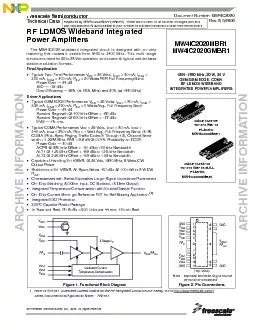PDF-Freescale Semiconductor Document Number AN Application Note Rev
Author : briana-ranney | Published Date : 2014-12-11
6 032013 20072009 20122013 Freescale Semiconductor Inc All rights reserved Contents Tilt Sensing Using a ThreeAxis Accelerometer by Mark Pedley 1 Introduction Accelerometers
Presentation Embed Code
Download Presentation
Download Presentation The PPT/PDF document "Freescale Semiconductor Document Number ..." is the property of its rightful owner. Permission is granted to download and print the materials on this website for personal, non-commercial use only, and to display it on your personal computer provided you do not modify the materials and that you retain all copyright notices contained in the materials. By downloading content from our website, you accept the terms of this agreement.
Freescale Semiconductor Document Number AN Application Note Rev: Transcript
Download Rules Of Document
"Freescale Semiconductor Document Number AN Application Note Rev"The content belongs to its owner. You may download and print it for personal use, without modification, and keep all copyright notices. By downloading, you agree to these terms.
Related Documents


